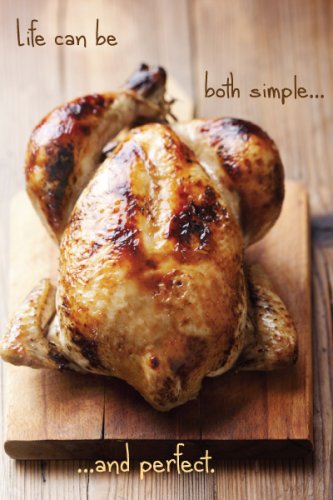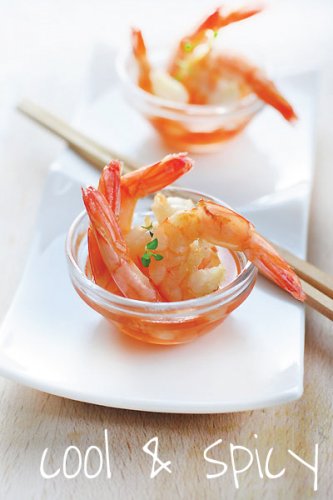
I consider myself a pretty adventuresome eater with a sophisticated palate. I’m not afraid of food. I’m not vegan or vegetarian. Paleo just makes me laugh, and I’m not a fad dieter. I don’t believe in limitations of experience when it comes to dining. So why is that I find a simple salad of fresh greens dressed in a snappy vinaigrette so exhilarating? The same goes for the simplest cuts of meat. There’s nothing quite as satisfying as a dense steak. Chewy and flavorful, but never tough.
The cook in me is galvanized by new or unusual ingredients. Exotic spices. New techniques. Healthy trends. The latest grain du jour. These are all culinary fascinations to me and can be the springboard for my imagination.
But ask me the simple question, “What was the best meal you ever ate?” and I’m more likely to choose a food memory. Oysters in Croatia. Christmas dinner 1972. An order of fries at In-N-Out at 2 am realizing that this burger was the first burger in a whole life together with the man across the table. Sometimes the memory of something is more than enough to fill your belly.
Which brings me to Simple Roast Chicken. It’s one of my favorite things to make (and eat). But I warn you, I eschew all the tricks that “guarantee” success. No beer bottles. No infusions. No brines– wet or dry. I like the simplest preparation possible.
Thomas Keller’s Favorite Simple Roast Chicken
It starts with a small bird. I consider 2 to 3 pounds ideal. But they are hard to come by in today’s pumped-up world. Still, they just cook more uniformly and are perfect for two people to split– with just the right ratio of breast to juicy dark meat. Giant dried-out breasts do not interest me, but sadly they have become the norm among chicken consumers today. How did that happen? There is just no way a piece of breast meat tastes better than a perfectly cook thigh. In fact, I bet if you blind tasted the people who swear that “don’t like” dark meat you’ll find that just the opposite is true.
When I make Roast Chicken I don’t use a recipe. I set the oven good and hot, about 475 degrees. I dry the bird inside and out, then I salt the skin generously. I roast it in the oven, breast side up till the deepest part of the thigh reads 155 to 160 degrees F on an instant-read thermometer. I’ll often serve it with herbed compound butter and that simple salad of fresh greens dressed in a snappy vinaigrette I mentioned. I don’t even use a recipe. But Thomas Keller has a good one so I’ll attach that here. GREG
Thomas Keller’s Favorite Simple Roast Chicken serves 2 CLICK here for a printable recipe
- 3 lb or smaller whole chicken
- 1 pn each kosher salt & black pepper
- 2 t minced thyme leaves, optional
- 2 tbsp unsalted butter
- 2 T dijon mustard
Preheat the oven to 450 degrees F. Rinse the chicken, then dry it very well with paper towels, inside and out. The less it steams, the drier the heat, the better.
Salt and pepper the cavity, then truss the bird. Trussing is not difficult, and if you roast chicken often, it’s a good technique to feel comfortable with. When you truss a bird, the wings and legs stay close to the body; the ends of the drumsticks cover the top of the breast and keep it from drying out. Trussing helps the chicken to cook evenly, and it also makes for a more beautiful roasted bird.
Now, salt the chicken—I like to rain the salt over the bird so that it has a nice uniform coating that will result in a crisp, salty, flavorful skin (about 1 tablespoon). When it’s cooked, you should still be able to make out the salt baked onto the crisp skin. Season to taste with pepper.
Place the chicken in a sauté pan or roasting pan and, when the oven is up to temperature, put the chicken in the oven. I leave it alone—I don’t baste it, I don’t add butter; you can if you wish, but I feel this creates steam, which I don’t want. Roast it until it’s done, 50 to 60 minutes. Remove it from the oven and add the thyme, if using, to the pan. Baste the chicken with the juices and thyme and let it rest for 15 minutes on a cutting board.
Remove the twine. Separate the middle wing joint and eat that immediately. Remove the legs and thighs. I like to take off the backbone and eat one of the oysters, the two succulent morsels of meat embedded here, and give the other to the person I’m cooking with. But I take the chicken butt for myself. I could never understand why my brothers always fought over that triangular tip—until one day I got the crispy, juicy fat myself. These are the cook’s rewards. Cut the breast down the middle and serve it on the bone, with one wing joint still attached to each. The preparation is not meant to be superelegant. Slather the meat with fresh butter. Serve with mustard on the side and, if you wish, a simple green salad. You’ll start using a knife and fork, but finish with your fingers, because it’s so good.


When I took the chicken out and tested the temp, the thermometer read 160 and it was flowing pink juices. Lots of pink juices! Just wondering if you have the same experience and it cooks a lot more in the 15 min settling period?
In my experience the chicken continues to go up in temperature after it leaves the oven. The larger the bird the greater rise you’ll have. Do make sure that when you check the temp it is not touching a bone or you will get a higher temperature read from a hot bone. GREG